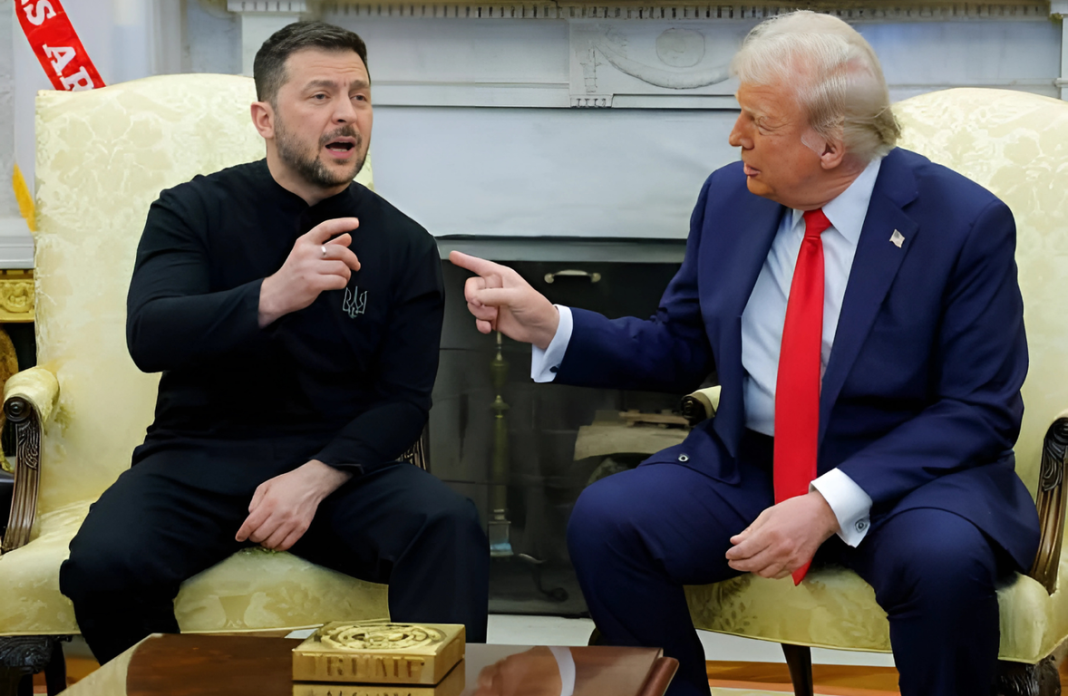Since Donald Trump assumed office for his second term as President of the United States, there have been notable shifts in US foreign policy, particularly concerning the ongoing Russia-Ukraine war. A significant decision by the Trump administration has been reducing military aid to Ukraine, altering the dynamics of the conflict.
Contents
Trump and Zelensky Meet at the White House Amid Tense Relations
US President Donald Trump recently hosted Ukrainian President Volodymyr Zelensky at the White House, marking a critical diplomatic engagement. The two leaders had previously exchanged strong and often contentious statements regarding the war. Given the circumstances, their meeting was seen as pivotal, with discussions covering various issues, including Ukraine’s mineral distribution agreements with the United States.
One of the key topics of the meeting was the ongoing conflict between Ukraine and Russia. According to media reports, Trump urged Zelensky to seek a “compromise” to establish a ceasefire with Russia. He also assured the Ukrainian President that the US would take all necessary steps to facilitate the end of hostilities.
Shift in US Policy Toward the Russia-Ukraine Conflict
Since the start of Trump’s second term, US policy regarding the Russia-Ukraine war has undergone a shift. The administration’s reduction of military assistance to Ukraine has been a defining move, sparking debates among international allies. Furthermore, Trump administration officials have actively engaged with Russian representatives in Saudi Arabia to negotiate a potential ceasefire. These diplomatic efforts often contradict Ukraine’s stance, leading to tensions between Washington and Kyiv.
Another controversial aspect has been Trump’s direct criticism of Zelensky. At one point, the US President blamed the Ukrainian leader for the war, even referring to him as a “dictator.” However, his stance appeared to soften after confirming the White House meeting. In a surprising turn, Trump later praised Zelensky, suggesting a potential shift in his approach to US-Ukraine relations.
Ukraine‘s Mineral Distribution Agreement with the United States
A crucial aspect of the discussions between Trump and Zelensky was Ukraine’s mineral distribution agreement with the US. Ukraine, known for its vast reserves of critical minerals essential for defence and technology industries, has been in negotiations with Washington over resource allocation.
Initially, Zelensky rejected an agreement prioritizing US access to Ukrainian minerals in exchange for continued military aid. However, recent developments indicate that Ukraine has reconsidered its stance. Reports suggest that Zelensky has agreed to finalize the deal, making it a key agenda item in his discussions with Trump.
With the meeting held on Friday, international observers await further details on how the US-Ukraine relationship will evolve, particularly in the context of economic agreements and diplomatic strategies to end the war. The outcome of these discussions could play a vital role in shaping Ukraine’s future and its ongoing battle for sovereignty.
What Lies Ahead for US-Ukraine Relations?
The Trump-Zelensky meeting at the White House signals a critical juncture in US-Ukraine relations. While Trump’s administration has reduced military aid, it remains actively involved in diplomatic negotiations to resolve the conflict. The shift in tone—from harsh criticism to a more cooperative approach—suggests an evolving strategy by the US government.
Moreover, the finalization of the mineral distribution agreement is expected to impact Ukraine’s economic and strategic positioning. If successfully executed, this deal could strengthen US-Ukraine trade relations and potentially provide Kyiv with alternative support amid reduced military assistance.
As the war continues, Ukraine faces pressure to navigate diplomatic channels carefully. Whether Trump’s call for compromise will lead to a breakthrough in ceasefire negotiations remains uncertain. However, what is evident is that US-Ukraine relations are entering a new phase, one that economic agreements, geopolitical manoeuvring, and ongoing diplomatic talks will define.



